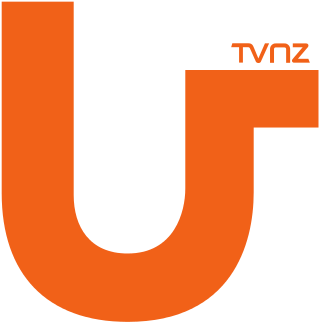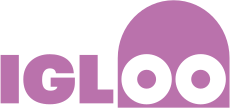
Television in New Zealand was introduced in 1960 as a state-run service. The broadcasting sector was deregulated in 1989, when the Government allowed competition to the state-owned Television New Zealand (TVNZ). There are currently three forms of broadcast television: a terrestrial (DVB-T) service provided by Freeview; as well as satellite (DVB-S) and internet streaming (IPTV) services provided nationwide by both Freeview and Sky.

Television New Zealand, more commonly referred to as TVNZ, is a television network that is broadcast throughout New Zealand and parts of the Pacific region. All of its currently-operating channels are free-to-air and commercially funded.

Sky Network Television Limited, more commonly known as Sky, is a New Zealand broadcasting company that provides pay television services via satellite, media streaming services, and broadband internet services. As of 31 December 2022, Sky had 1,023,378 residential television subscribers consisting of 517,003 satellite subscribers and 506,375 streaming subscribers. Additionally, Sky had 23,156 broadband customers. Despite the similarity of name, branding and services, such as Sky Go and MySky shared with its European equivalent, Sky Group, there is no connection between the companies.
Three, stylized as +HR=E, is a New Zealand nationwide television channel. Launched on 26 November 1989 as TV3, it was New Zealand's first privately owned television channel. The channel currently broadcasts nationally in digital free-to-air form via the state-owned Kordia on terrestrial and satellite. Vodafone also carries the channel for their cable subscribers in Wellington and Christchurch. It previously broadcast nationally on analogue television until that was switched off on 1 December 2013.
Free-to-air (FTA) services are television (TV) and radio services broadcast in unencrypted form, allowing any person with the appropriate receiving equipment to receive the signal and view or listen to the content without requiring a subscription, other ongoing cost, or one-off fee. In the traditional sense, this is carried on terrestrial radio signals and received with an antenna.

Sky Open is a New Zealand free-to-air television network. It airs a varied mix of programming, largely imported from Australia, the United Kingdom and the United States.
In most telecommunications organizations, a virtual channel is a method of remapping the program number as used in H.222 Program Association Tables and Program Mapping Tables to a channel number that can be entered as digits on a receiver's remote control.
Freesat is a British free-to-air satellite television service, first formed as a joint venture between the BBC and ITV plc and now owned by Everyone TV. The service was formed as a memorandum in 2007 and has been marketed since 6 May 2008. Freesat offers a satellite alternative to the Freeview service on digital terrestrial television, with a broadly similar selection of channels available without subscription for users purchasing a receiver.

Kordia is a New Zealand state-owned enterprise. It provides a range of services, including connectivity, cloud and cyber security services, as well as managed IT, field services, broadcast and safety of life communications.

TVNZ 1 is the first national television channel owned and operated by the state-owned broadcaster Television New Zealand (TVNZ). It is the oldest television broadcaster in New Zealand, starting out from 1960 as independent channels in the four main centres of Auckland, Wellington, Christchurch and Dunedin, networking in 1969 to become NZBC TV. The network was renamed Television One in 1975 upon the break-up of the New Zealand Broadcasting Corporation, and became a part of TVNZ in 1980 when Television One and South Pacific Television merged. The channel assumed its current name in October 2016.
Freeview is New Zealand's free-to-air television platform. It is operated by a joint venture between the country's major free-to-air broadcasters – government-owned Television New Zealand and Radio New Zealand, government-subsidised Whakaata Māori, and the American-owned Warner Bros. Discovery.
There are four major forms of digital television (DTV) broadcast in the United Kingdom: a direct-to-home satellite service from the Astra 28.2°E satellites provided by Sky UK, a cable television service provided by Virgin Media ; a free-to-air satellite service called Freesat; and a free-to-air digital terrestrial service called Freeview. In addition, an IPTV system known as BT TV is provided by BT. Individual access methods vary throughout the country. 77% of the United Kingdom has access to HDTV via terrestrial digital television. Satellite is the only source of HDTV broadcast available for the remaining 23%.

TVNZ 6 was a digital-only, commercial-free television channel operated by Television New Zealand. It launched in September 2007, and was available in 60.3% of New Zealand homes on the Freeview and SKY Television Digital platforms. TVNZ 6 was on air daily from 6am to midnight.
Saorview is the national digital terrestrial television (DTT) service in Ireland. It is owned by RTÉ and operated by 2RN.

U was an interactive youth-oriented New Zealand television channel, owned and operated by TVNZ. The channel launched on 13 March 2011, and featured reality programming, as well as an interactive live show and music content. It replaced the now defunct TVNZ 6. Leading up to the launch of U, there were 13 days' worth of promotional videos and programming information aired to advertise the new channel.
Eden is a privately owned, national free-to-air television channel in New Zealand and has been on air since 2012. The channel features programs on topics such as: lifestyle, news, travel, reality, movies, entertainment, comedy, game shows and drama.

TVNZ Duke, formerly Duke and stylized as TVNZ DUKE or DUKE, is a New Zealand television channel run by state broadcaster Television New Zealand. It screens programming targeted at a male audience. It was launched on 20 March 2016 to replace TVNZ's popup channel that was used to air the Wimbledon Championships. Initially advertised as a male-skewed channel, this branding was later dropped.









